Mitigating climate change with blue carbon
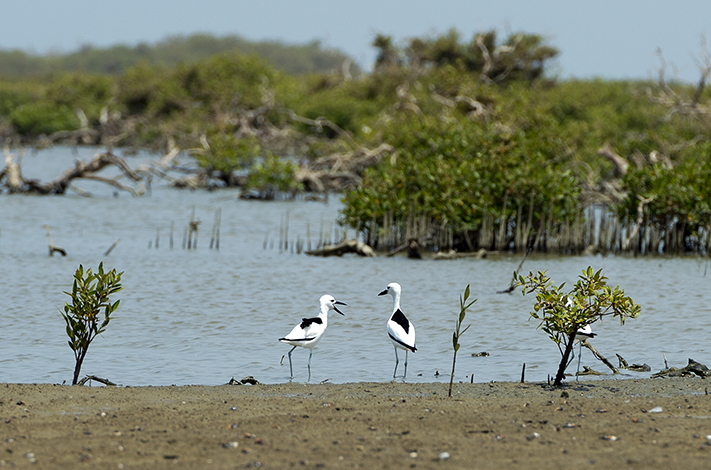
Saudi Arabia's east and west coasts feature extensive mangrove populations—an important part of blue carbon ecosystems—that the country is working to preserve. Photo courtesy of Saudi Aramco.
The KAUST Red Sea Research Center’s (RSRC) Research Workshop: Blue Carbon on March 20 and 21 focused on the role of these ecosystems in climate change mitigation and adaptation, featuring a series of international expert speakers and panelists from academia, specialized research organizations, including the Regional Organization for the Conservation of the Environment of the Red Sea and Gulf of Aden (PERSGA), and Saudi Aramco discussing blue carbon initiatives and their importance around the world.
Benefits of blue carbon
Found on every continent except Antarctica, blue carbon ecosystems cover approximately 49 million hectares of the globe’s surface and sequester carbon dioxide (CO2) at much higher rates per unit area than terrestrial forests. Their soils can sequester carbon for extremely long periods—even up to millennia, as in the marine environment, they are safe from the forest fires that return carbon deposited in soils back to the atmosphere.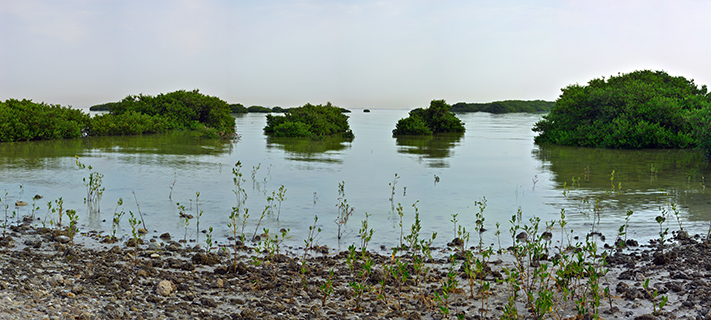
Saudi Arabia's east and west coasts feature extensive mangrove populations—an important part of blue carbon ecosystems—that the country is working to preserve. Photo courtesy of Saudi Aramco.
Blue carbon ecosystems generate multiple benefits—they regulate coastal water quality; provide habitats for fisheries and endangered marine species; protect from storms, floods and sea level rise; prevent shoreline erosion; and provide sources of food and ecotourism opportunities for coastal communities. When degraded, destroyed or converted to other land use, the ecosystems are sources of greenhouse gases, emitting their stored carbon in the form of CO2 into the oceans and the atmosphere.
Blue carbon ecosystems are being destroyed at rates of 340,000 to 980,000 hectares per year, making them some of the world’s most threatened ecosystems. It is estimated that 67 percent, 35 percent and 29 percent of the globe’s mangroves, tidal marshes and seagrass meadows, respectively, have already been lost, with a further 30 to 40 percent of seagrasses and tidal marshes and almost all unprotected mangroves expected to be lost in the next 100 years.
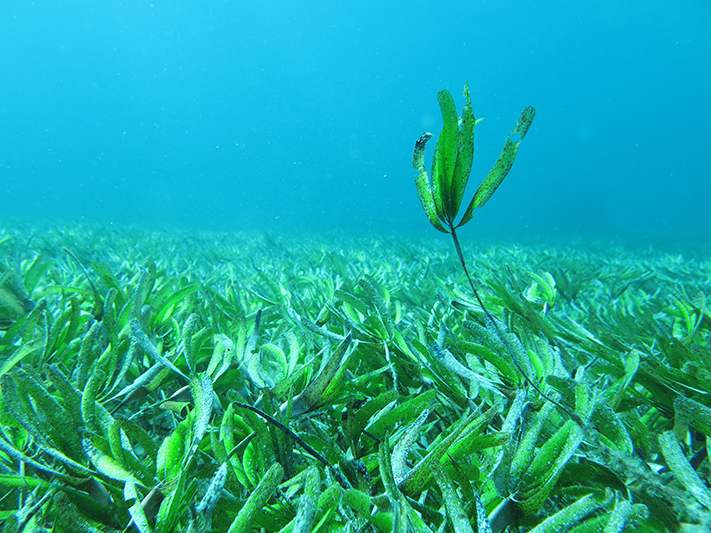
Seagrass meadows in the Red Sea are important components of the world's blue carbon ecosystem.
Loss of these ecosystems is estimated to result in 0.15 to 1.02 billion tons of CO2 released per year, with their destruction mostly occurring due to human activities such as coastal development, agriculture and aquaculture, mangrove forest exploitation and land and marine sources of pollution.
Blue carbon for the world
“Blue carbon is very important to the Kingdom and the world,” stated workshop speaker Carlos Duarte, KAUST professor of marine science, director of the RSRC and the Tarek Ahmed Juffali research chair in Red Sea ecology. Duarte noted how blue carbon ecosystems—including mangroves—lie along Saudi Arabia’s east and west coasts.“Saudi Arabia’s Red Sea environment has been well-preserved, and this is something that should continue for generations,” he said. “Uniquely, in Saudi Arabia, mangroves in the Red Sea have not been lost but have been increasing at an area of about 30 percent. This is due to efforts from Saudi Arabia implementing conservation and restoration strategies and industry efforts from Saudi Aramco, for example. In contrast, about 90 percent of mangroves on the Arabian Gulf coast have been lost, with mangroves only protected inside Saudi Aramco’s precincts.”
Mangroves are the most important natural CO2 storage source—or “sink”—in the Kingdom. In recognition of this and as part of Saudi Aramco’s Corporate Biodiversity Plan, the company recently finalized plans for a mangrove eco-park in Rahima Bay on the Arabian Gulf coast, planting 10,000 mangrove seedlings there. At completion, the park is expected to protect 63 square kilometers of mangroves, salt marshes and seagrasses.
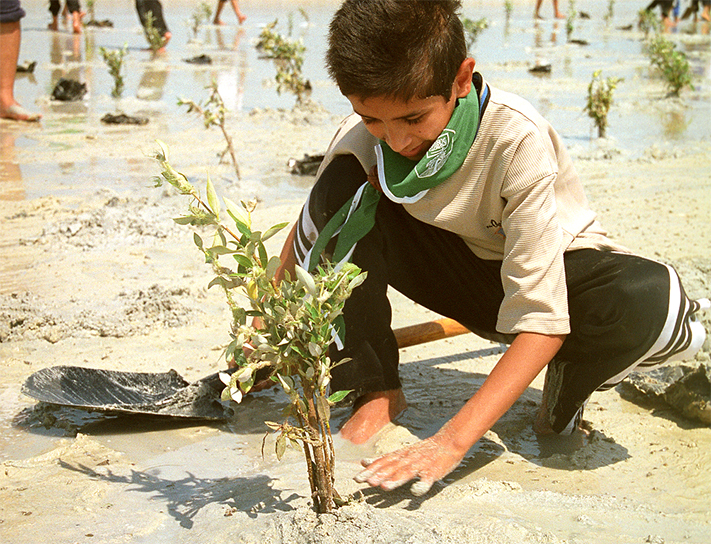
A young Saudi boy helps to plant mangroves along Saudi Arabia's eastern coast as part of Saudi Aramco and Saudi Arabia's mangrove population restoration efforts. Photo courtesy of Saudi Aramco.
In 2015 alone, the company planted a total of 400,000 mangrove seedlings and has now planted over 900,000 seedlings along the shores of Saudi Arabia’s Eastern Province, aiming to reach a total of 2 million in 2017.
“Saudi Aramco’s massive mangrove planting scheme is extremely important,” Duarte said. “We are also partnering with Aramco to produce their blue carbon report, which is the world’s first industry-led blue carbon report. We believe these efforts have led to Saudi Arabia being the only region where mangroves are increasing instead of decreasing.”
Restoring Saudi Arabia’s ecosystems
Keynote speaker Dr. Osama Faqeeha, Saudi Arabia’s deputy minister for environment from the Ministry of Environment, Water and Agriculture, noted the Kingdom has ambitious plans to continue preserving its coastal and marine ecosystems.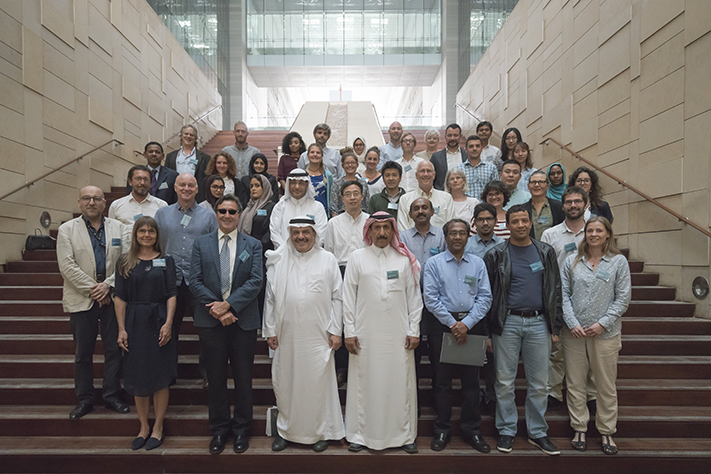
The KAUST Red Sea Research Center’s Research Workshop: Blue Carbon on March 20 and 21 focused on the role of blue carbon ecosystems in climate change mitigation and adaptation and featured talks and panel discussions by experts in the field.
“We must carefully design rehabilitation schemes and conserve our natural resources at the same time, rehabilitating areas that are important for climate change mitigation in a sustainable way. Partners like Saudi Aramco, KAUST and NGOs are important enablers of our strategy.”
International conservation efforts
Outside of Saudi Arabia, countries such as the United States and Australia have undertaken extensive blue carbon ecosystem restoration and protection measures. Some of these include policymaking, coastal management strategies and the development of tools used for restoring and conserving coastal ecosystems.One system coming into use internationally is developing protocols for including coastal carbon services in carbon markets, which would encourage higher levels of private investment in costal habitat conservation efforts.
Income can be generated by conserving these ecosystems for their sequestration potential, and it is believed they could be comparable to, or even exceed, income generated by methods that degrade or destroy the ecosystems, such as agriculture, aquaculture or coastal development.
Paul Lavery, professor of marine ecology at Edith Cowan University (Australia), discussed some of these schemes in his workshop presentation, noting, “One of the major goals of the blue carbon community has been to make government and industry aware of the blue carbon crediting scheme. With Australia holding around 12 percent of the blue carbon habitats worldwide, it is one of the nations with the greatest potential to benefit from developing blue carbon schemes.”
Experts from the International Blue Carbon Initiative state that “voluntary carbon markets seem likely as a source of financial support for coastal ecosystem conservation and restoration activities,” pointing out that a number of mechanisms must be deployed in the future to preserve these ecosystems and the carbon that lies in their plant bodies, root systems and rich soils.
Increasing blue carbon awareness
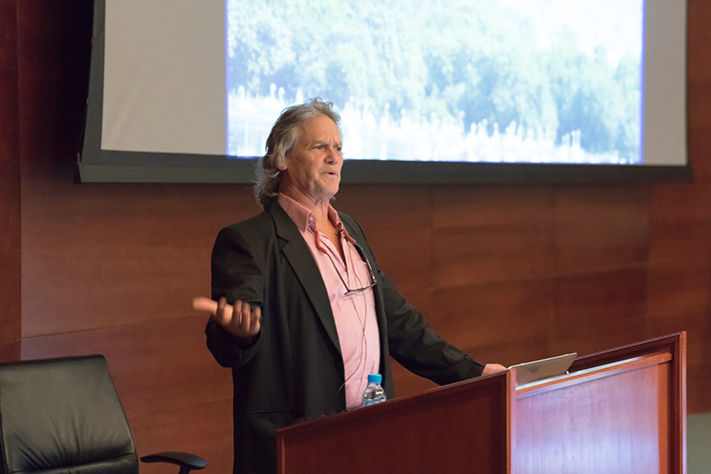
Professor J. Boone Kauffman from Oregon State University noted that blue carbon ecosystems have an important value for the world during his workshop presentation on March 21.
“We must engender local and international support for blue carbon ecosystems,” said conference speaker J. Boone Kauffman, a professor in the Department of Fisheries and Wildlife at Oregon State University (U.S.). “We are still lagging behind in terms of awareness when it comes to these ecosystems, but they can help meet the goals of national emission reduction strategies, and they have an important ‘keystone’ value in nature.”
- By Caitlin Clark, KAUST News

